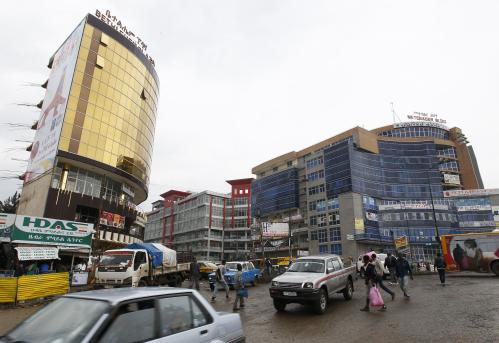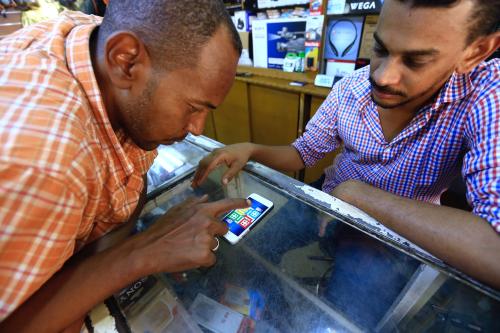On September 16, 2021, the World Bank discontinued the Doing Business (DB) report, one of its flagship diagnostic products. This action follows what the World Bank called “a series of reviews and audits of the report and its methodology.”
The DB report, published each year since 2004, was one of the World Bank’s most influential reports in recent years. Every autumn, people around the world would wait eagerly and, in some cases, with some trepidation, for its release. Over time, the reports increasingly attracted the attention of heads of governments who wanted to see their countries do well in the rankings.
When the DB report came out in 2015, the Indian government was disappointed. Soon after taking office in 2014, Prime Minister Modi announced his government’s intention to bring India’s ranking into the top 50 within a few years. Several reforms were carried out in the following months, which the Indian government hoped would put India on a trajectory of rapid annual improvements in the ranking. The 2015 report (officially called “Doing Business in 2016”, since the World Bank always gave the report a forward-looking title) indicated only a modest improvement in India’s rank, from 142 to 130.
The World Bank explained to the Indian government that while several reforms may have been enacted on paper, Indian businesses did not report feeling an impact on the ground. Some responded, “What reforms?”, while others heard about the reforms but had not seen improvement on the ground. The reforms could not be officially recognized until the private sector reported real improvements. The World Bank suggested that the government put in place feedback loops to provide real-time information from businesses on whether the reforms were being well implemented. The government, instead of whining further about the scores, started working on such feedback loops. For several regulatory reforms covered by the DB indicators, it started surveying businesses on whether they felt any reform impact on the ground.
From February 2016 to May 2017, the government carried out a series of business-to-government (B2G) feedback exercises and focus group discussions (FGDs) on how much the businesses were aware of the enacted reforms and their views on the quality of reform implementation. Nine B2G feedback exercises were carried out. Topics covered construction permits (three surveys each in Delhi and Mumbai), starting a business (two surveys), and trading across borders.
The exercises revealed several implementation gaps, some major and some minor. An example is construction permitting. A business survey carried out in Delhi in March 2016 revealed the following implementation issues: a) significant lack of agency coordination—architects still need to obtain approvals from up to 10 different agencies; b) some facilities for online payment were not properly implemented and certain fees were still paid manually; c) very low awareness of the online system among users; d) no way to track the status of an application; e) information lacking on documentary and other requirements. In other words, the reforms had not gone far enough to have impact on the ground.
This feedback exercise helped generate several recommendations to address the deficiencies. These were provided to the Municipal Corporation of Delhi (MCD), and most were acted upon. Follow-up feedback exercises in October 2016 and February 2017 validated these actions while generating additional recommendations for further improvement. A similar effort was made in Mumbai.
The impact of these efforts can be seen in the trends in India’s performance on the “Dealing with Construction Permits” indicator. In the Doing Business in 2016 report, India’s ranked 183 on this indicator. Thirty-three procedures were involved taking 191 days according to the indicators. Two years later, the number of days had come down to 144 with a modest improvement in the rank to 180. The more substantial improvements came the following year when the DB report published in October 2018 indicated a reduction in the number of procedures and days required to 18 and 95 respectively. Still a long way to go but enough to propel India’s ranking on this indicator to 52. While all this improvement cannot be attributed to the feedback exercises alone, it is possible to trace a substantial part of this improvement to actions taken as a result of these exercises.
The Indian government also recognized that the DB indicators did not cover many regulatory interfaces that created problems for businesses and that the indicator measures were based on conditions in just two cities, i.e., New Delhi and Mumbai. Thus, in parallel to its efforts on the DB front, the Indian government embarked on an ambitious regulatory reform program at the state-level covering all states and union territories in the country. A long list of regulatory reforms was identified covering several regulatory areas, and state governments were instructed to carry out the reforms. Called the Business Reforms Action Plan, the program started in 2015.
Progress was monitored through annual indicators that ranked states according to their performance on implementing the reforms. The first such indicators, published in 2015, did not take into account business feedback. However, seeing the usefulness of the feedback exercises carried out as part of the DB program, the government changed the state-level reform indicators in 2018 by making a substantial part of the indicator scores dependent on business feedback.
The powerful demonstration effect of such feedback exercises had touched individual state governments too. In 2018, four state governments, Chhattisgarh, Jharkhand, Orissa, and Rajasthan, expressed an interest in knowing why there was poor uptake of self-certification and third-party certification options provided in business inspection reforms carried out by these states. At their request, the World Bank carried out an independent feedback exercise that could help design corrective actions to improve uptake.
The Indian experience from 2016 onward is a good example of what the DB indicators can lead to if governments use them well. First, the government refocused its attention from reforms on paper to reforms on the ground. Second, it recognized the importance of consulting with the private sector, which knows best where the shoe pinched, and designed corrective actions based on the feedback. This iterative process helped improve reform implementation quality. Third, the government recognized that while the DB indicators were useful, they were not adequate to diagnose the myriad of regulatory issues that businesses all over India faced. Thus, the government embarked on a more comprehensive, state-level, reform program, and, inspired by the power of indicators, underpinned this program by a set of performance indicators. Finally, once the pioneering DB-related feedback exercises proved useful, they created a demonstration effect, first within the central government, which replicated such exercises for the state-level reform program, and then on individual state governments.







Commentary
How one country responded to disappointing Doing Business scores
October 8, 2021